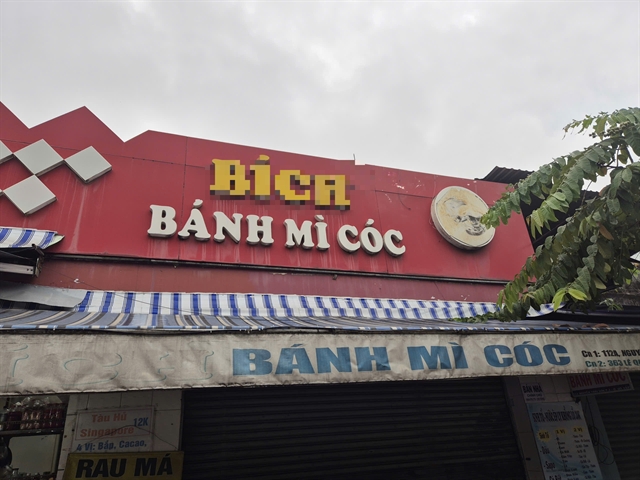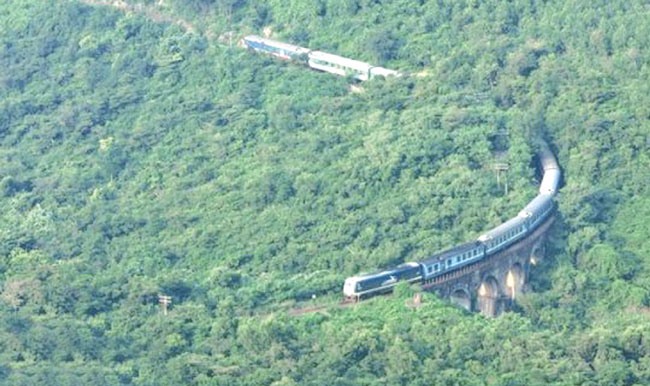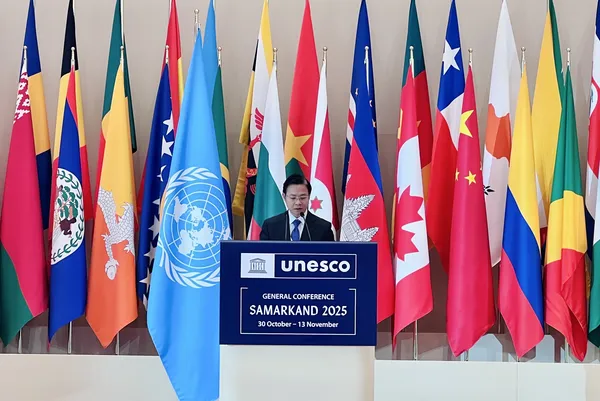 Society
Society

Major problems of Việt Nam’s railway sector will be resolved if a double-track railway is developed on the route from the north to the south of the country, experts said yesterday.
 |
| The Hà Nội-HCM City express train travels through the Hải Vân Pass. — VNA/VNS Photo |
HÀ NỘI — Major problems of Việt Nam’s railway sector will be resolved if a double-track railway is developed on the route from the north to the south of the country, experts said yesterday.
Vương Đình Khánh, former vice director general of the Việt Nam Railway Corporation, said at a talk about railway development held by Giao thông (Transport) newspaper that for decades, the corporation – a major railway operator and service provider in Việt Nam – desired to run 25 train pairs, but in fact operated just 18 train pairs, because infrastructure failed to meet required conditions.
A double-track railway usually involves running one track in each direction, compared with a single-track railway where trains in both directions share the same track.
“Current limited infrastructure hindered the sector’s development, weakened its competitiveness and posed risks to road safety,” he said.
Khánh said it was time for Việt Nam to seriously consider developing a double-track railway and funding the development, as the National Assembly was discussing amendments to the 2005 Railway Law, which came into effect on January 1, 2006, and has proven problematic and inadequate for current and future development of the sector.
Nguyễn Huy Hiền, vice head of the Railway Department under the Transport Ministry said a major problem for the railway sector in Việt Nam was that the Việt Nam Railway Corporation was managing, using, exploiting and running the railway system, which was being funded by government.
The railway system – a public asset – was also managed by the Transport Ministry, he said, implying an overlapping in management between the government body and the corporation.
Hiền said the railway bill needed to clarify roles and responsibilities of the parties involved.
Moreover, the bill should be better oriented towards the market, meaning that not only the Việt Nam Railway Corporation, but also other enterprises should be allowed to operate the national railway system, which would help create competition and reduce transport cost.
Nguyễn Văn Doanh, a Việt Nam Railway Corporation board member, said it was difficult to attract private investment for railway infrastructure.
In the short-term, the state-budget would still majorly fund railway infrastructure development in case infrastructure development and operation were separated.
Deputy Minister of Transport Nguyễn Ngọc Đông said the ministry would submit to the government a proposal on high-speed North-South Railway with speed of 160-200km per hour.
He said under the proposal, railway lines would be standardised and upgraded to better serve passengers.
Lê Minh Đạo, vice head of the ministry’s Planning and Investment Department, cited reports by the Việt Nam-Japan Consulting Joint Venture saying that until 2030, the North-South transport corridor will see demand of 534,000 passengers per day or 195 million passengers per year, 4.5-5.5 times higher than that of 2010.
High-speed railway was needed as other means of transports were unable to carry some 138 million passengers per year.
In the NA’s agenda last Friday, the deputy minister agreed on the need to amend the 2005 Railway Law. He noted that railway infrastructure has deteriorated and was outdated. While most countries were using tracks that are 1.435m wide (broad gauge), Việt Nam was still using 1m-wide tracks (metre gauge). The bill is expected to be discussed next Friday. — VNS




